
Data Science and Engineering
Scope & Guideline
Elevating knowledge at the crossroads of technology and data.
Introduction
Aims and Scopes
- Data Mining and Analysis:
The journal emphasizes research in data mining techniques, including efficient algorithms for extracting insights from large datasets, anomaly detection, and classification methods. - Graph and Network Analysis:
A significant focus is on the application of graph theory and network analysis to various domains, including social networks, recommendation systems, and complex systems modeling. - Machine Learning and Artificial Intelligence:
The journal publishes works that advance machine learning methodologies, including deep learning, reinforcement learning, and their applications in diverse fields such as healthcare, transportation, and finance. - Blockchain and Federated Learning:
Research exploring the integration of blockchain technology with machine learning frameworks, particularly federated learning, is a key area of interest, emphasizing privacy-preserving data processing. - Spatial-Temporal Data Processing:
The journal covers methodologies for analyzing spatial-temporal data, crucial for applications in urban planning, traffic forecasting, and environmental monitoring. - Recommendation Systems:
A core area involves developing novel recommendation algorithms that utilize user behavior and preferences, often leveraging advanced techniques such as graph neural networks and contrastive learning.
Trending and Emerging
- Federated Learning and Privacy-Preserving Techniques:
There is a notable increase in research focused on federated learning and privacy-preserving methods, reflecting growing concerns over data privacy and the need for secure distributed learning frameworks. - Graph Neural Networks and Their Applications:
The rise of graph neural networks in various applications, including social recommendation and anomaly detection, highlights an emerging trend that emphasizes the importance of relational data in modern data science. - Integration of AI with IoT (AIoT):
Papers exploring the intersection of artificial intelligence and the Internet of Things (IoT) are on the rise, particularly in applications like smart cities and infrastructure maintenance, showcasing the relevance of data science in real-time sensing and automation. - Explainable AI (XAI):
The growing emphasis on explainability in AI systems is reflected in increasing publications addressing how to make machine learning models more interpretable and accountable, which is essential for user trust and regulatory compliance. - Multi-modal and Cross-domain Learning:
Research that involves learning from multiple data modalities and across different domains is gaining prominence, indicating a trend towards more holistic approaches to data analysis and model training.
Declining or Waning
- Traditional Statistical Methods:
There seems to be a waning interest in conventional statistical analysis techniques, as the focus shifts towards more advanced machine learning and data mining methods. - Basic Data Structures and Algorithms:
Papers centered on fundamental data structures and algorithms are becoming less frequent, indicating a movement towards more complex applications and hybrid approaches involving multiple methodologies. - Classic Database Management Systems (DBMS):
Research that solely focuses on traditional DBMS without the integration of modern data processing techniques (like big data or NoSQL systems) appears to be declining, as the field moves towards more innovative data architectures.
Similar Journals

JOURNAL OF INFORMATION SCIENCE AND ENGINEERING
Advancing Knowledge in Library and Information Sciences.JOURNAL OF INFORMATION SCIENCE AND ENGINEERING, published by the Institute of Information Science in Taiwan, is a pivotal platform for the dissemination of innovative research in the multidisciplinary fields of information science and engineering. Established in 1993, the journal primarily focuses on areas such as library and information sciences, human-computer interaction, hardware and architecture, as well as computational theory and software development. Despite holding a current Q4 ranking in several categories, the journal demonstrates significant potential for growth, particularly in computation and software systems, as evidenced by its Scopus rankings and percentiles. Researchers, professionals, and students will find this journal to be an invaluable resource to stay abreast of evolving theories and technologies in information science. The journal is accessible through traditional subscription models, fostering a broad academic outreach. It serves to enhance knowledge-sharing and collaboration within this dynamic and ever-evolving field.
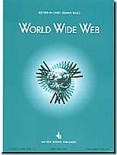
WORLD WIDE WEB-INTERNET AND WEB INFORMATION SYSTEMS
Exploring the Frontiers of Web TechnologiesWORLD WIDE WEB - INTERNET AND WEB INFORMATION SYSTEMS, published by Springer, is a leading academic journal that focuses on the cutting-edge areas of Internet technologies and web-based information systems. With an esteemed ISSN of 1386-145X and an E-ISSN of 1573-1413, this journal has been a significant contributor to the fields of Computer Networks and Communications, Hardware and Architecture, and Software since its inception in 1998. The journal consistently ranks in the Q1 category across these fields, reflecting its high impact and relevance, evidenced by its impressive Scopus rankings where it stands in the upper percentiles (79th for Computer Networks and Communications, 77th for Hardware and Architecture, and 75th for Software). Researchers, professionals, and students looking to stay at the forefront of web information systems will find a wealth of valuable resources and innovative research compellingly presented in this journal, available for publication until 2024.
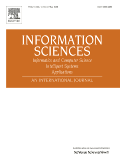
INFORMATION SCIENCES
Leading the Charge in Information ResearchINFORMATION SCIENCES, published by Elsevier Science Inc, is a premier peer-reviewed journal that has become instrumental in advancing the field of information science since its inception in 1968. With an impressive array of quartile rankings in 2023, including Q1 in Artificial Intelligence, Computer Science Applications, Control and Systems Engineering, Information Systems and Management, Software, and Theoretical Computer Science, this journal serves as a vital resource for researchers and professionals looking to explore cutting-edge theories and practical applications within these domains. The journal is indexed extensively, with notable Scopus rankings, reflecting its significance and influence in the academic community—ranked 6th in Theoretical Computer Science and 10th in Information Systems and Management, among others. Although it does not currently offer an open-access option, the depth of research published within INFORMATION SCIENCES ensures that it remains a key reference point for advancing academic inquiry and addressing complex challenges in the information landscape.
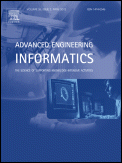
ADVANCED ENGINEERING INFORMATICS
Transforming Insights into Engineering ExcellenceADVANCED ENGINEERING INFORMATICS is a prestigious journal published by Elsevier Science Ltd, dedicated to the interdisciplinary fields of Artificial Intelligence and Information Systems. Established in 2002, this journal serves as a vital platform for researchers and practitioners to disseminate groundbreaking insights and innovations that shape the future of engineering and technological integration. With an impressive impact factor and ranked in the Q1 category for both Artificial Intelligence and Information Systems in 2023, it holds a prominent position, with Scopus rankings placing it in the 92nd percentile among 394 journals in Computer Science Information Systems and the 87th percentile among 350 journals in Computer Science Artificial Intelligence. ADVANCED ENGINEERING INFORMATICS embraces an Open Access model, ensuring that cutting-edge research is accessible to a global audience, fostering collaboration and development across academic and professional circles. The journal is committed to advancing knowledge and influencing practice, paving the way for the next generation of technologies that enhance engineering informatics.

KNOWLEDGE AND INFORMATION SYSTEMS
Advancing the Frontiers of Information ScienceKNOWLEDGE AND INFORMATION SYSTEMS, published by SPRINGER LONDON LTD, is a distinguished journal in the field of information systems, artificial intelligence, and human-computer interaction. With its ISSN 0219-1377 and E-ISSN 0219-3116, this journal has built a robust reputation since its inception, featuring a convergence of valuable research from 2005 through 2024. Catering to a diverse academic audience, it is classified among the leading journals in its category, proudly holding a Q1 ranking in Information Systems and Q2 rankings in multiple other domains. The journal aims to publish cutting-edge research that not only advances theoretical understanding but also provides practical applications within these rapidly evolving fields. Although it is not an Open Access journal, subscribers can access a wealth of knowledge critical for researchers, practitioners, and students looking to enhance their expertise. With a 2023 Scopus rank placing it within the 66th percentile for Information Systems, KNOWLEDGE AND INFORMATION SYSTEMS is an invaluable resource for those committed to pushing the frontiers of knowledge in technology and information science.

JOURNAL OF INTELLIGENT INFORMATION SYSTEMS
Pioneering Research in AI and Information SystemsThe Journal of Intelligent Information Systems, published by Springer since 1992, is a premier academic journal that offers a multidisciplinary platform in the fields of Artificial Intelligence, Computer Networks and Communications, Hardware and Architecture, Information Systems, and Software. With an impressive impact reflected in its 2023 Q2 category rankings across multiple domains and a commendable standing in the Scopus Rankings—ranking #84 in Computer Networks and Communications and #101 in Artificial Intelligence—the journal is recognized for its contribution to advancing knowledge and innovation. Although it is not an open-access journal, its accessibility through institutional subscriptions ensures that a wide range of researchers, professionals, and students can engage with high-quality, peer-reviewed research that addresses the latest advancements and trends in intelligent systems. For over three decades, this journal has effectively bridged gaps between academia and industry, making it a vital resource for those aiming to push boundaries in intelligent information systems.
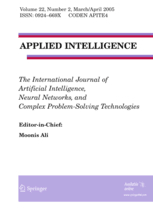
APPLIED INTELLIGENCE
Elevating knowledge in the realm of intelligent systems.Applied Intelligence is a prominent peer-reviewed journal that has been instrumental in advancing the field of Artificial Intelligence since its inception in 1991. Published by Springer, a reputable name in academic publishing, the journal focuses on the innovative applications of intelligent systems, algorithms, and methodologies across various disciplines. With an impressive Q2 ranking in the Artificial Intelligence category for 2023, and a Scopus rank of #117 out of 350 in its field, Applied Intelligence is recognized for its significant contributions and rigorous standards. The journal is accessed primarily through subscription, ensuring that high-quality research reaches the academic community and industry professionals alike. Its commitment to disseminating cutting-edge research makes it an invaluable resource for researchers, practitioners, and students interested in the practical implications of AI advancements. Join a community dedicated to exploring the transformative power of artificial intelligence and stay ahead in this ever-evolving field!
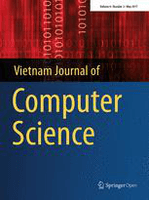
Vietnam Journal of Computer Science
Bridging theory and application in the vibrant field of computer science.Vietnam Journal of Computer Science, published by World Scientific Publishing Co Pte Ltd, serves as a prominent platform for researchers and professionals in the rapidly evolving field of computer science. Launched as an Open Access journal in 2013, it aims to disseminate high-quality research across various subfields, including Artificial Intelligence, Computational Theory and Mathematics, Computer Vision, and Information Systems. With its ISSN 2196-8888 and E-ISSN 2196-8896, the journal provides valuable insights and contributes to the growing body of knowledge in computer science, particularly in Southeast Asia. Despite its relatively recent establishment, the journal has achieved significant rankings, including Q3 status in multiple categories and notable visibility in Scopus metrics, evidencing its commitment to fostering innovative research. This journal is essential for those looking to stay at the forefront of computational advancements and applications, particularly in Vietnam and beyond, facilitating an engaging dialogue among scholars and industry professionals.

Foundations of Data Science
Connecting Theory and Practice in Data ScienceFoundations of Data Science, published by the American Institute of Mathematical Sciences (AIMS), is a pioneering journal dedicated to advancing knowledge within the ever-evolving fields of data science, mathematics, and computational theory. With an impact factor reflecting its quality and relevance, this journal has established itself as a crucial resource for researchers and professionals alike, achieving remarkable rankings in the Scopus metrics across various mathematical categories, including 35th in Analysis and 70th in Statistics and Probability. The journal, which has been continuously growing in significance since its inception in 2019, focuses on both foundational theories and applied methodologies, providing open access to cutting-edge research from 2024 onward. Its commitment to fostering interdisciplinary collaboration ensures that it remains at the forefront of the data science realm, making it an essential platform for students, scholars, and practitioners aiming to deepen their understanding and contribute to the scientific community.
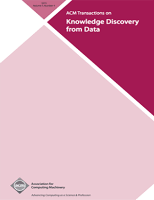
ACM Transactions on Knowledge Discovery from Data
Unlocking Insights, Transforming Data into KnowledgeACM Transactions on Knowledge Discovery from Data (TKDD), published by the Association for Computing Machinery, is a prestigious journal at the forefront of the interdisciplinary realm of data mining and knowledge discovery. With an impressive Q1 ranking in Computer Science and a Scopus rank of #43 out of 232, this journal stands out as a top-tier resource for innovative research that addresses complex challenges in data science. Covering impactful studies from 2007 to 2024, TKDD presents cutting-edge algorithms, methodologies, and applications that shape the future of knowledge extraction from vast datasets. While not an open-access journal, it provides a platform for researchers, professionals, and students to disseminate their findings and engage with the latest advancements in this rapidly evolving field. By fostering collaboration and knowledge sharing, TKDD plays a vital role in advancing the understanding and application of data analysis techniques, making it an essential read for anyone involved in the pursuit of knowledge from data.